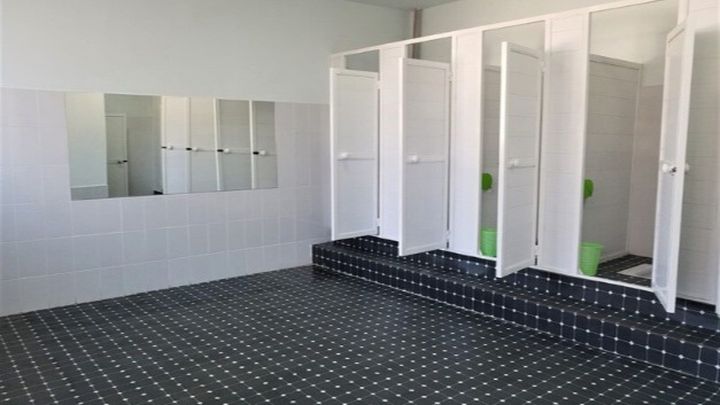
This project is completed!
Donation protected
This project is completed! We're now accepting donations to help Secondary School No. 24 purchase and install new windows at https://www.gofundme.com/f/new-school-windows .
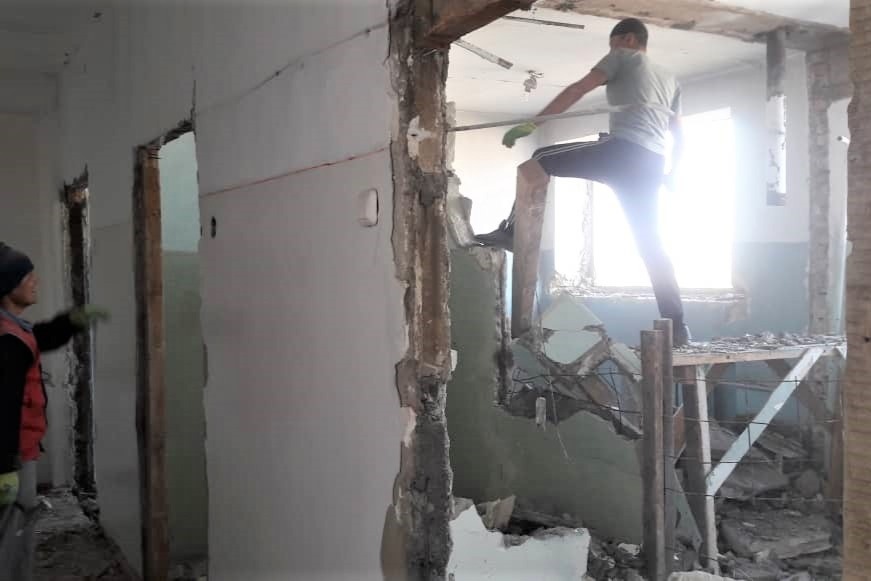


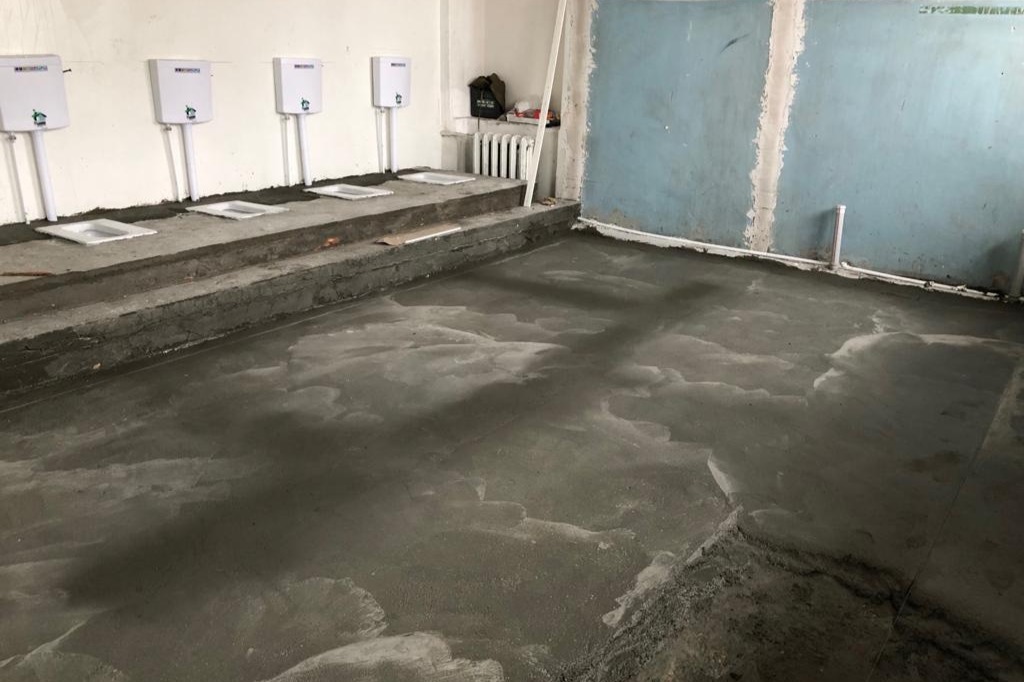
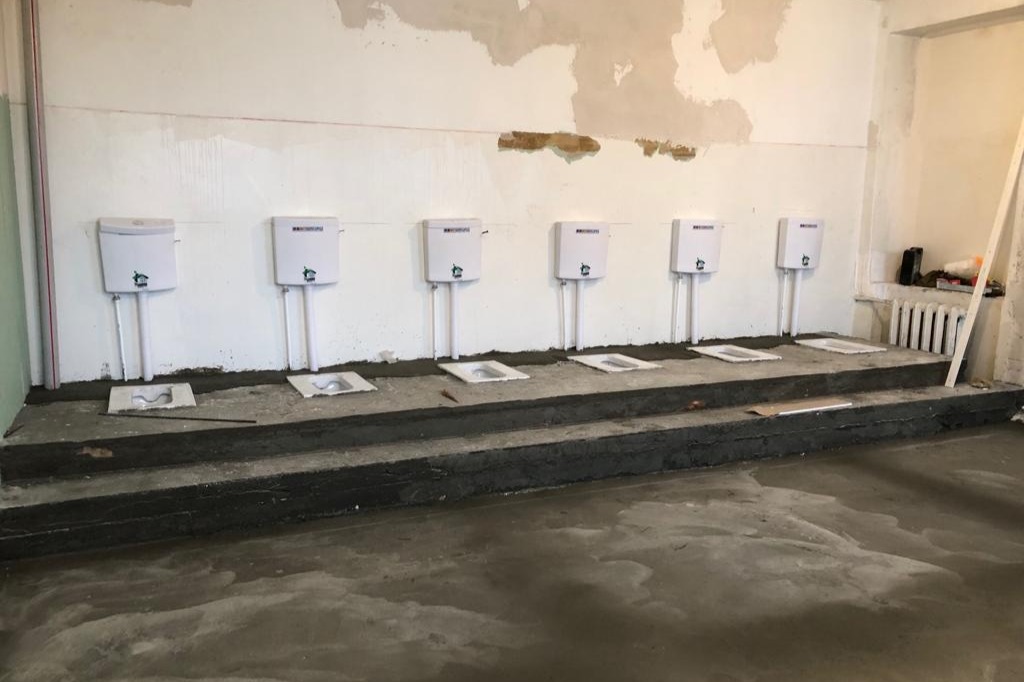
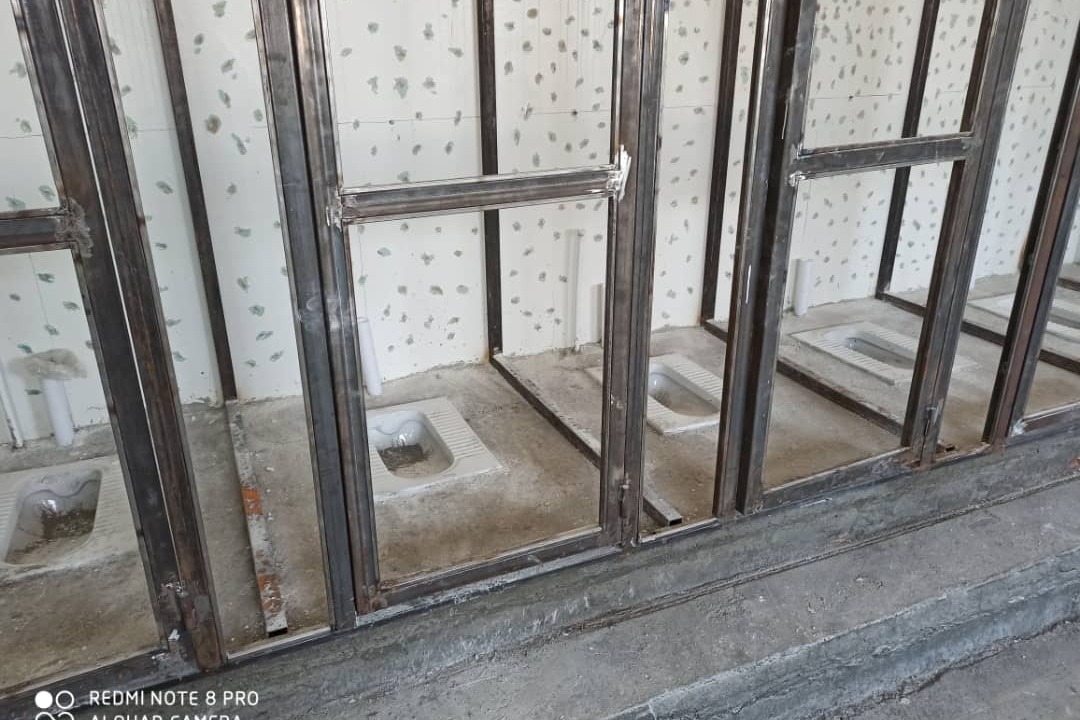




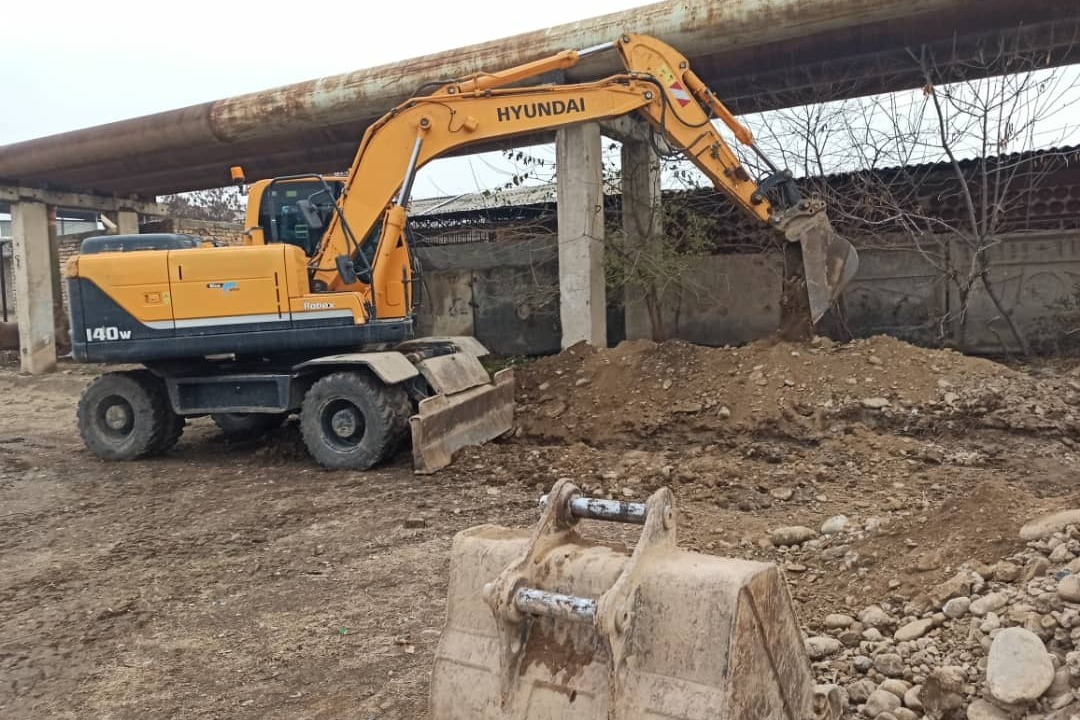


The Safe Sanitary School (Коопсуз Санитардык Мектеп) campaign moved! We teamed up with Water Charity, the Crestline, CA-based 501(c)(3) nonprofit dedicated to helping people around the world access clean drinking water and improved sanitation. Now donations to help School 24 green build a handicap-accessible, gender-responsive toilet block connected to sewerage are tax deductible. Tax-deductible donations can be made via the Donate button on our project page at https://watercharity.com/mikhail-vasilyevich-frunze-secondary-school-toilet-project-kyrgyzstan.
Salamatsyzby! Hello! My name is John DeLeo Jr., and I'm a volunteer teacher at Secondary School No. 24 named after Mikhail Vasilyevich Frunze in Osh city, Kyrgyzstan. You can find me on Facebook at https://www.facebook.com/profile.php?id=100022893607434. I started the Safe Sanitary School (Коопсуз Санитардык Мектеп) campaign to help the school and its director, Dano Abduvahabova, raise money for new construction of a gender-sensitive, sewer-connected toilet block.
The school's existing simple pit latrine has irremediable, below grade design deficiencies that endanger life safety and public health. The in-service toilet block is a source of excreta-related diseases including diarrhea, respiratory infection, intestinal worms, and viral hepatitis. The cumulative incidence or risk of students contracting one of these infections during the 2018-2019 school year was 18.9%. Chronic exposure to fecal-oral pathogens and recurrent infection in students leads to long-term health risks.
The school is working with Central Asian Alliance for Water (CAAW) on the toilet build. CAAW is a registered NGO in Kyrgyzstan. It works with the Government of the Kyrgyz Republic on rural and urban water and sanitation projects in Kyrgyzstan and with international partners like Women Engage for a Common Future (WECF), the International Secretariat for Water and Solidarity Water Europe (ISW-SWE), UNICEF, and the U.S. Agency for International Development (USAID) on projects in the Kyrgyz Republic and Central Asian region.
The project is supported by Osh Mayor Sarybashov Taalaibek Nasirbekovich, Vice Mayor Azimov Jasur Makhmudovich, Osh City Kenesh Deputy Turduev R. A., and Head of the Osh City Education Department Asanov Avazbek Raimzhanovich.
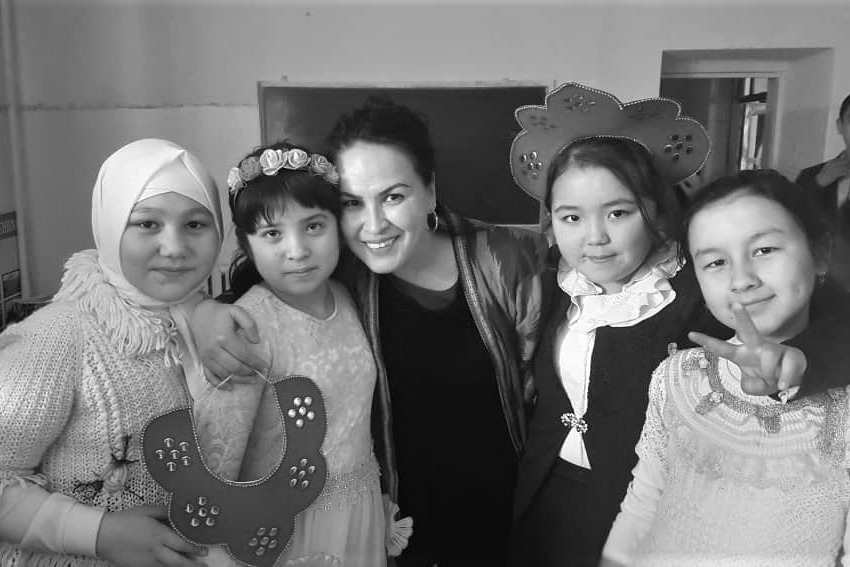
Access to adequate sanitation is a basic human right. You can help give the children at Secondary School 24 this right by donating $6 for Sustainable Development Goal 6 (SDG 6), or more, and sharing this page with your family, friends and contact networks.
Your donation to the construction of a new toilet block will directly benefit 880 students, including 80 children five years of age and under who are at increased risk of sanitation-related illness, and 44 teachers at the school. Indirect beneficiaries of the project will be the 924 families of students and teachers, especially those with non-school going children in the household, through decreased secondary disease transmission from the school to the home environment and reduced cost of illness.
Proceeds from the campaign are being deposited in the school’s account at Kyrgyz Investment and Credit Bank (KICB), Osh Branch.
This project supports UN General Assembly Resolution 64/292 (2010) recognizing sanitation as a basic human right, articles 24(1c) on combating disease and malnutrition and 24(e) on access to education, hygiene and sanitation of the Convention on the Rights of the Child (1989), and SDGs 3 on good health and well-being, 4 on quality education, 5 on gender equality, and 6 on clean water and sanitation (UN A/RES/70/1, 2015).
By upgrading the school's latrine facility to an off-site system connected to an available sewer line, we can eliminate a life safety hazard, prevent the spread of infectious disease, stop the cycle of diarrhea, malnutrition and micronutrient deficiency that leads to immunocompromise and infection, growth faltering and cognitive deficits, and reduce the health burden of sanitation-related cost of illness to families.
A period friendly toilet block with running water and privacy lets girls stay in school and hygienically manage their menstrual health with dignity. Support women's and girls' menstrual health management (MHM), a better learning environment, and improved psychosocial and health-related quality of life for these kids and teachers by donating or spreading the word today.
-- for detailed information and research, read below --
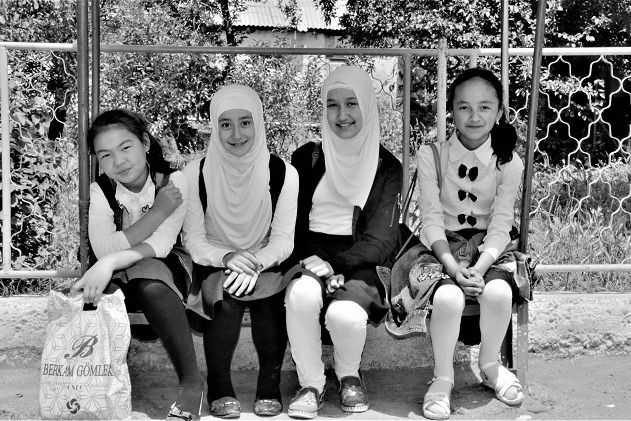
Secondary School 24, named after Mikhail Vasilyevich Frunze, is a K-11 school that serves children ranging in age from 4 to 17. The school's simple dry pit latrine facility was built in 1989. The normal useful life of this type of latrine is ten (10) years.
The nonsewered, 100 square meter detached building consists of a brick superstructure, concrete slab roof, concrete floor/cover slab, 28 drop-holes, and a concrete block-lined pit. Excreta is disposed, treated, and stored at the point of generation. The facility is a life safety hazard due to cesspit design and deferred maintenance from a lack of local government funds.
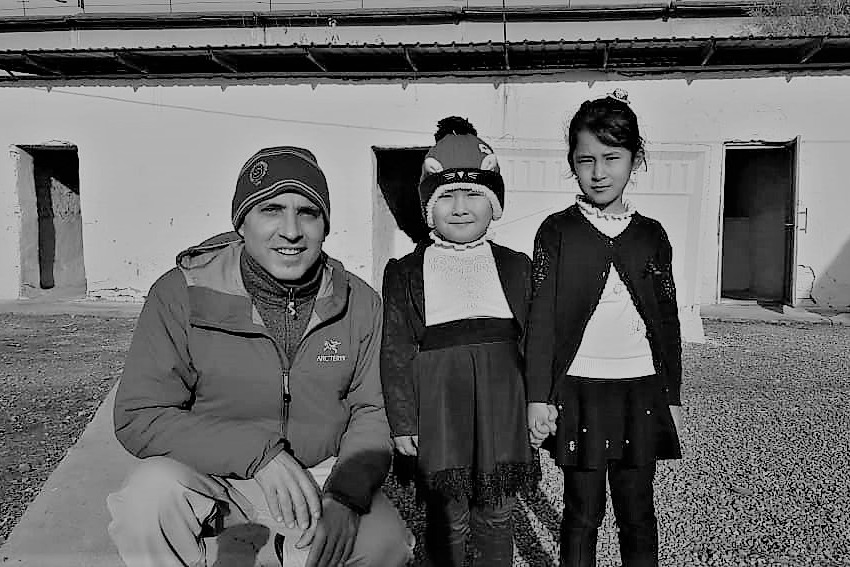
An engineering report was prepared for the school by A.V. Tsoi, Engineer for the inspection of buildings and structures (State qualification certificate PR-8.2 No. 022622). The report includes the following key finding: “From the point of view of safety of operation of the facility, the most dangerous violation is the lack of ventilation from the cesspool, which can lead to the accumulation of explosive gases in the pit.”
The pit does not have a hatch for the emptying and disposal of waste, or direct, vertical exhaust vent pipes. High concentration of biogas in the cesspit including flammable methane (CH4) and hydrogen sulfide (H2S) due to inadequate venting of the pit substructure is a combustion hazard.
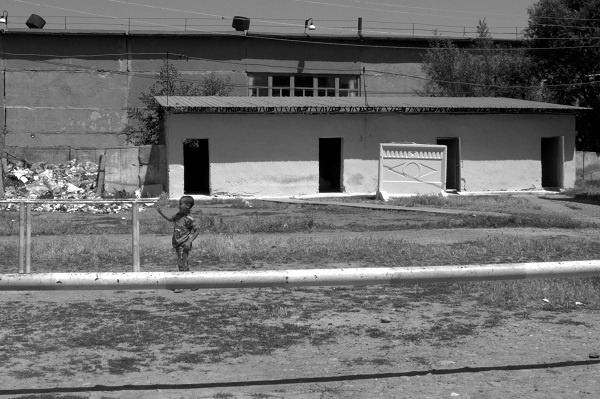
Life- and public health-threatening defects in the design of the latrine substructure cannot be remediated without full reconstruction of the building.
The best option for the school's public safety is to replace it. Adequate on-site sanitation is a primary barrier to fecal-oral transmission of pathogens by hygienically separating excreta from human contact. The existing facility's protective effect as a transmission barrier is limited by its condition. It no longer fulfils its function of providing safe and hygienic disposal of human waste.
Environmental change to an MHM friendly, off-site sanitation system is necessary to meet improved sanitation standards as defined by the WHO/UNICEF Joint Monitoring Program for Water Supply and Sanitation. A new toilet connected to sewerage that transports excreta from the school site can reduce diarrheal disease risk at the school by 60 to 70 percent.
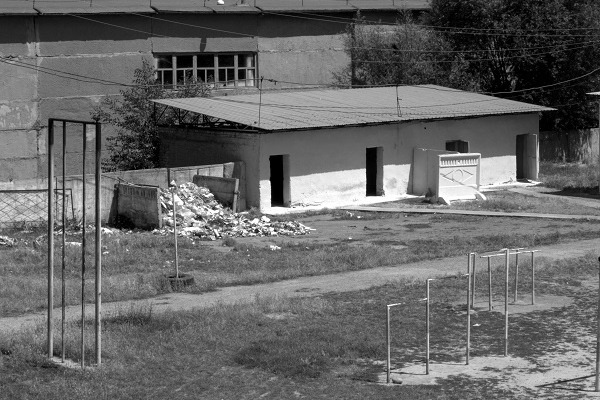
Replacing the thirty-year-old latrine facility will reduce the infection burden on students, teachers and their families, control odor and fly vectors, disrupt the exposure pathway of fecal-oral pathogens from the outdoor latrine to the inside of the school, eliminate a point source of groundwater pollution, and provide women and girl users with privacy, safety, and dignity in menstruation.
A facility for safe disposal of fecal waste is the first link in the sanitation chain. Building a new toilet block at the school will reduce the incidence of community-acquired diarrheal disease which is a common contributor to malnutrition.

Children at the school are caught in a cycle of diarrhea, malnutrition, and micronutrient deficiency. Iron, vitamin A and zinc deficiencies caused by catabolism of nutrient stores, malabsorption, and endogenous fecal loss during frequent diarrhea episodes lead to low height-for-age, reduced catch-up growth because of shorter infection-free intervals, impaired cognitive development, and increased susceptibility to preventable diseases like acute respiratory infection (ARI).

There were thirty-nine (39) confirmed cases of ARI at the school during the 2018-2019 school year. Recurring diarrhea and micronutrient deficiency, especially zinc, increase student and teacher risk of contracting ARI. Schools are particularly vulnerable to ARI spread from person to person by droplet or fecal-oral transmission because of the high frequency of close proximity interactions and the fact that children (0-15) are more likely than other age groups to be unsuspected, asymptomatic carriers of the ARI virus.
Improving the school's sanitation will reduce the prevalence of intestinal worms, or soil-transmitted helminths (STH). One hundred and twenty-one (121) cases of worm infection were recorded during the 2018-2019 school year. Worm burden is greatest among children between 5 and 15 years of age. The two most prevalent STHs among school children in Osh city are roundworm (Ascaris lumbricoides) and pinworm (Enterobius vermicularis). STHs are transmitted from child to child via the fecal-oral route by ingestion of worm eggs. Worm infection is associated with vitamin A and iron deficiencies, impaired physical and mental development, cognitive deficits, and increased school absenteeism. According to the World Health Organization's “Deworming for Health and Development: Report of the third global meeting of the partners for parasite control,” the average IQ loss per worm infection is 3.75 points. A new latrine connected to sewerage can reduce the likelihood of STH infection by 67 percent.
Better sanitation at the school through the provision of new toilet infrastructure will reduce the incidence of hepatitis A virus (HAV) infection. Six (6) students were infected with HAV during the 2018-2019 school year. HAV is transmitted from child to child by the fecal-oral route through direct contact with HAV carriers and contaminated surfaces.
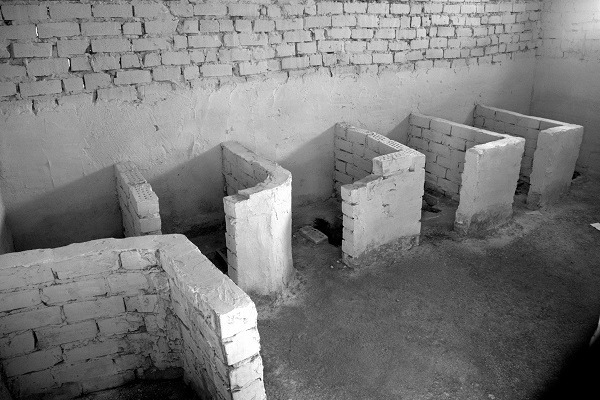
The sanitary and epidemiological condition of the school's toilet block is a public health hazard. Building a new latrine will be an important barrier to infection transmission at the school, resulting in reduced secondary spread to students' and teachers' homes.
Household contacts, particularly non-school going siblings and children under 24 months of age, are at increased risk of diarrheal disease exposure through close proximity interactions with students and teacher parents who act as infection vehicles. The estimated average total family cost per diarrheal episode requiring medical treatment in Kyrgyzstan is $55.97. A low-end average number of diarrhea episodes per child per year is 3.
Because of the high cost of diarrhea treatment relative to income, households with two or more children under five years of age are less likely to seek care, or are forced to use their savings or reduce expenditures on basic necessities to pay for the direct cost of sanitation-related illness. Your charity can reduce the economic burden of infection on families by eliminating the environmental source of excreta diseases at the school.
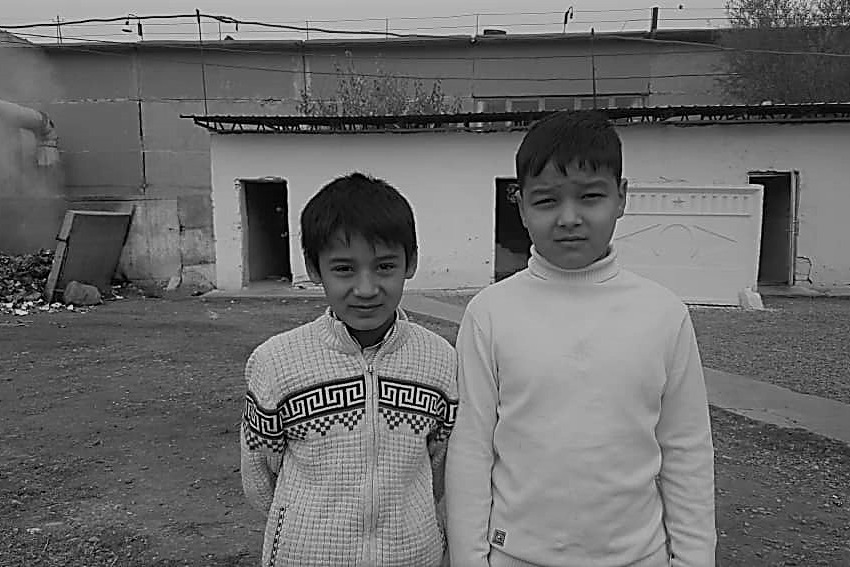
Fly control through environmental improvement to an off-site sanitation system at the school can reduce diarrhea incidence by 23 to 40 percent. The school's latrine block is a nuisance site for disease-transmitting flies and bad odor.
Doorless entries, wall apertures, and open drop-holes without fly-proof covers allow flies to access the latrine pit and make direct contact with fecal sludge for breeding and feeding. The flies carry intestinal disease agents and worm eggs on their mouthparts, feet, and bodies, and mechanically transmit them to students and teachers, surfaces and food through regurgitation, defecation, and dislodgement.

Building a new latrine will eliminate the cesspit as a breeding and feeding site, prevent direct fly contact with excreta, and reduce fly attraction by minimizing latrine odor gases, namely, ammonia and trimethylamine. Malodor from the latrine not only attracts flies but is a disgust factor that leads to toileting avoidance, voluntary stool retention and physical discomfort. Students and teachers who avoid toileting at school are at higher risk of developing voiding dysfunctions like incontinence and constipation, and urinary tract infection.

Movement of students and teachers between the latrine and the school is an exposure pathway for infection. Latrine users are intermediate carriers of fecal pathogens from the outdoor latrine site to inside the school through contamination of their footwear.
The rough, unsealed concrete floor of the latrine cannot be adequately cleaned and disinfected. Fouling of the cover slab around the foot rests and stances with excreta contaminates users' shoe soles. The shoe bottoms act as fomites, transporting fecal contamination from outside to inside the school. Infection occurs through touching of the shoes by a surface-to-hand-to-mouth route, or via inhalation and swallowing through airborne transmission by aerosolization of fecal bacteria in dust from contaminated flooring.
Walking is an important factor for transmission of floor bacteria, dispersing infectious particles onto high-contact surfaces like school desks and chairs. New toilet construction will mitigate this exposure pathway by incorporating environmental surface materials for walls and flooring that are easy to clean and disinfect.
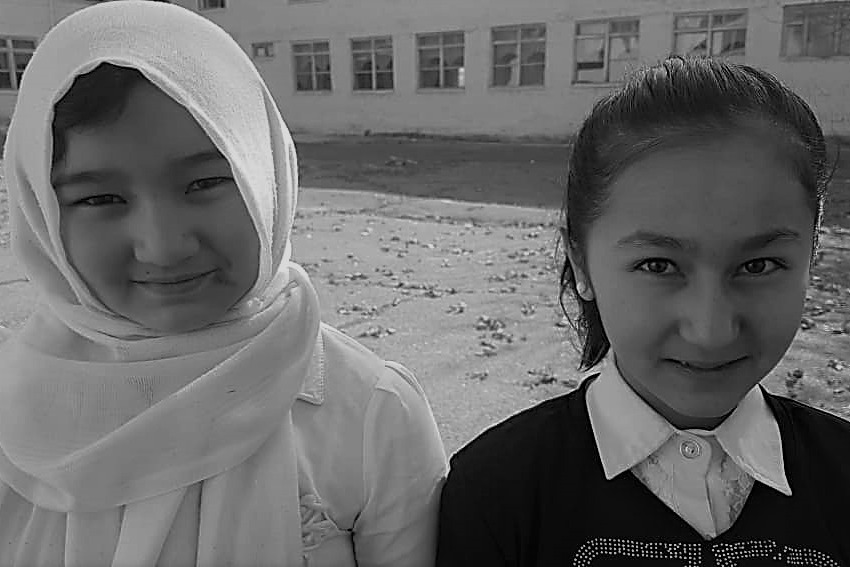
The latrine is a point source of local groundwater contamination. According to the engineering report, the pit is water permeable and liquid waste is penetrating into the local groundwater.
The engineer's conclusion from visual inspection of the soft consistency of the pit sludge is that the liquid component of the feces (urine) is constantly infiltrating into the underlying soil. This hydraulic load transports pathogens and nitrate to groundwater drinking sources. The minimum safe distance between a pit latrine and the nearest groundwater source is 10 meters. The existing latrine building is located at an unsafe distance (6.5 m) from nearby homes and private wells.
Poor containment of fecal waste due to deficiencies in the latrine substructure is a public health hazard. Building a new latrine block at the school will allow an increase in the setback to a distance greater than 10 meters from groundwater drinking sources, and eliminate a pollution source point.

Thanks for reading! Thanks for sharing!
We ❤️ comments! Leave your message of support!













The Safe Sanitary School (Коопсуз Санитардык Мектеп) campaign moved! We teamed up with Water Charity, the Crestline, CA-based 501(c)(3) nonprofit dedicated to helping people around the world access clean drinking water and improved sanitation. Now donations to help School 24 green build a handicap-accessible, gender-responsive toilet block connected to sewerage are tax deductible. Tax-deductible donations can be made via the Donate button on our project page at https://watercharity.com/mikhail-vasilyevich-frunze-secondary-school-toilet-project-kyrgyzstan.
Salamatsyzby! Hello! My name is John DeLeo Jr., and I'm a volunteer teacher at Secondary School No. 24 named after Mikhail Vasilyevich Frunze in Osh city, Kyrgyzstan. You can find me on Facebook at https://www.facebook.com/profile.php?id=100022893607434. I started the Safe Sanitary School (Коопсуз Санитардык Мектеп) campaign to help the school and its director, Dano Abduvahabova, raise money for new construction of a gender-sensitive, sewer-connected toilet block.
The school's existing simple pit latrine has irremediable, below grade design deficiencies that endanger life safety and public health. The in-service toilet block is a source of excreta-related diseases including diarrhea, respiratory infection, intestinal worms, and viral hepatitis. The cumulative incidence or risk of students contracting one of these infections during the 2018-2019 school year was 18.9%. Chronic exposure to fecal-oral pathogens and recurrent infection in students leads to long-term health risks.
The school is working with Central Asian Alliance for Water (CAAW) on the toilet build. CAAW is a registered NGO in Kyrgyzstan. It works with the Government of the Kyrgyz Republic on rural and urban water and sanitation projects in Kyrgyzstan and with international partners like Women Engage for a Common Future (WECF), the International Secretariat for Water and Solidarity Water Europe (ISW-SWE), UNICEF, and the U.S. Agency for International Development (USAID) on projects in the Kyrgyz Republic and Central Asian region.
The project is supported by Osh Mayor Sarybashov Taalaibek Nasirbekovich, Vice Mayor Azimov Jasur Makhmudovich, Osh City Kenesh Deputy Turduev R. A., and Head of the Osh City Education Department Asanov Avazbek Raimzhanovich.

Access to adequate sanitation is a basic human right. You can help give the children at Secondary School 24 this right by donating $6 for Sustainable Development Goal 6 (SDG 6), or more, and sharing this page with your family, friends and contact networks.
Your donation to the construction of a new toilet block will directly benefit 880 students, including 80 children five years of age and under who are at increased risk of sanitation-related illness, and 44 teachers at the school. Indirect beneficiaries of the project will be the 924 families of students and teachers, especially those with non-school going children in the household, through decreased secondary disease transmission from the school to the home environment and reduced cost of illness.
Proceeds from the campaign are being deposited in the school’s account at Kyrgyz Investment and Credit Bank (KICB), Osh Branch.
This project supports UN General Assembly Resolution 64/292 (2010) recognizing sanitation as a basic human right, articles 24(1c) on combating disease and malnutrition and 24(e) on access to education, hygiene and sanitation of the Convention on the Rights of the Child (1989), and SDGs 3 on good health and well-being, 4 on quality education, 5 on gender equality, and 6 on clean water and sanitation (UN A/RES/70/1, 2015).
By upgrading the school's latrine facility to an off-site system connected to an available sewer line, we can eliminate a life safety hazard, prevent the spread of infectious disease, stop the cycle of diarrhea, malnutrition and micronutrient deficiency that leads to immunocompromise and infection, growth faltering and cognitive deficits, and reduce the health burden of sanitation-related cost of illness to families.
A period friendly toilet block with running water and privacy lets girls stay in school and hygienically manage their menstrual health with dignity. Support women's and girls' menstrual health management (MHM), a better learning environment, and improved psychosocial and health-related quality of life for these kids and teachers by donating or spreading the word today.
-- for detailed information and research, read below --

Secondary School 24, named after Mikhail Vasilyevich Frunze, is a K-11 school that serves children ranging in age from 4 to 17. The school's simple dry pit latrine facility was built in 1989. The normal useful life of this type of latrine is ten (10) years.
The nonsewered, 100 square meter detached building consists of a brick superstructure, concrete slab roof, concrete floor/cover slab, 28 drop-holes, and a concrete block-lined pit. Excreta is disposed, treated, and stored at the point of generation. The facility is a life safety hazard due to cesspit design and deferred maintenance from a lack of local government funds.

An engineering report was prepared for the school by A.V. Tsoi, Engineer for the inspection of buildings and structures (State qualification certificate PR-8.2 No. 022622). The report includes the following key finding: “From the point of view of safety of operation of the facility, the most dangerous violation is the lack of ventilation from the cesspool, which can lead to the accumulation of explosive gases in the pit.”
The pit does not have a hatch for the emptying and disposal of waste, or direct, vertical exhaust vent pipes. High concentration of biogas in the cesspit including flammable methane (CH4) and hydrogen sulfide (H2S) due to inadequate venting of the pit substructure is a combustion hazard.

Life- and public health-threatening defects in the design of the latrine substructure cannot be remediated without full reconstruction of the building.
The best option for the school's public safety is to replace it. Adequate on-site sanitation is a primary barrier to fecal-oral transmission of pathogens by hygienically separating excreta from human contact. The existing facility's protective effect as a transmission barrier is limited by its condition. It no longer fulfils its function of providing safe and hygienic disposal of human waste.
Environmental change to an MHM friendly, off-site sanitation system is necessary to meet improved sanitation standards as defined by the WHO/UNICEF Joint Monitoring Program for Water Supply and Sanitation. A new toilet connected to sewerage that transports excreta from the school site can reduce diarrheal disease risk at the school by 60 to 70 percent.

Replacing the thirty-year-old latrine facility will reduce the infection burden on students, teachers and their families, control odor and fly vectors, disrupt the exposure pathway of fecal-oral pathogens from the outdoor latrine to the inside of the school, eliminate a point source of groundwater pollution, and provide women and girl users with privacy, safety, and dignity in menstruation.
A facility for safe disposal of fecal waste is the first link in the sanitation chain. Building a new toilet block at the school will reduce the incidence of community-acquired diarrheal disease which is a common contributor to malnutrition.

Children at the school are caught in a cycle of diarrhea, malnutrition, and micronutrient deficiency. Iron, vitamin A and zinc deficiencies caused by catabolism of nutrient stores, malabsorption, and endogenous fecal loss during frequent diarrhea episodes lead to low height-for-age, reduced catch-up growth because of shorter infection-free intervals, impaired cognitive development, and increased susceptibility to preventable diseases like acute respiratory infection (ARI).

There were thirty-nine (39) confirmed cases of ARI at the school during the 2018-2019 school year. Recurring diarrhea and micronutrient deficiency, especially zinc, increase student and teacher risk of contracting ARI. Schools are particularly vulnerable to ARI spread from person to person by droplet or fecal-oral transmission because of the high frequency of close proximity interactions and the fact that children (0-15) are more likely than other age groups to be unsuspected, asymptomatic carriers of the ARI virus.
Improving the school's sanitation will reduce the prevalence of intestinal worms, or soil-transmitted helminths (STH). One hundred and twenty-one (121) cases of worm infection were recorded during the 2018-2019 school year. Worm burden is greatest among children between 5 and 15 years of age. The two most prevalent STHs among school children in Osh city are roundworm (Ascaris lumbricoides) and pinworm (Enterobius vermicularis). STHs are transmitted from child to child via the fecal-oral route by ingestion of worm eggs. Worm infection is associated with vitamin A and iron deficiencies, impaired physical and mental development, cognitive deficits, and increased school absenteeism. According to the World Health Organization's “Deworming for Health and Development: Report of the third global meeting of the partners for parasite control,” the average IQ loss per worm infection is 3.75 points. A new latrine connected to sewerage can reduce the likelihood of STH infection by 67 percent.
Better sanitation at the school through the provision of new toilet infrastructure will reduce the incidence of hepatitis A virus (HAV) infection. Six (6) students were infected with HAV during the 2018-2019 school year. HAV is transmitted from child to child by the fecal-oral route through direct contact with HAV carriers and contaminated surfaces.

The sanitary and epidemiological condition of the school's toilet block is a public health hazard. Building a new latrine will be an important barrier to infection transmission at the school, resulting in reduced secondary spread to students' and teachers' homes.
Household contacts, particularly non-school going siblings and children under 24 months of age, are at increased risk of diarrheal disease exposure through close proximity interactions with students and teacher parents who act as infection vehicles. The estimated average total family cost per diarrheal episode requiring medical treatment in Kyrgyzstan is $55.97. A low-end average number of diarrhea episodes per child per year is 3.
Because of the high cost of diarrhea treatment relative to income, households with two or more children under five years of age are less likely to seek care, or are forced to use their savings or reduce expenditures on basic necessities to pay for the direct cost of sanitation-related illness. Your charity can reduce the economic burden of infection on families by eliminating the environmental source of excreta diseases at the school.

Fly control through environmental improvement to an off-site sanitation system at the school can reduce diarrhea incidence by 23 to 40 percent. The school's latrine block is a nuisance site for disease-transmitting flies and bad odor.
Doorless entries, wall apertures, and open drop-holes without fly-proof covers allow flies to access the latrine pit and make direct contact with fecal sludge for breeding and feeding. The flies carry intestinal disease agents and worm eggs on their mouthparts, feet, and bodies, and mechanically transmit them to students and teachers, surfaces and food through regurgitation, defecation, and dislodgement.

Building a new latrine will eliminate the cesspit as a breeding and feeding site, prevent direct fly contact with excreta, and reduce fly attraction by minimizing latrine odor gases, namely, ammonia and trimethylamine. Malodor from the latrine not only attracts flies but is a disgust factor that leads to toileting avoidance, voluntary stool retention and physical discomfort. Students and teachers who avoid toileting at school are at higher risk of developing voiding dysfunctions like incontinence and constipation, and urinary tract infection.

Movement of students and teachers between the latrine and the school is an exposure pathway for infection. Latrine users are intermediate carriers of fecal pathogens from the outdoor latrine site to inside the school through contamination of their footwear.
The rough, unsealed concrete floor of the latrine cannot be adequately cleaned and disinfected. Fouling of the cover slab around the foot rests and stances with excreta contaminates users' shoe soles. The shoe bottoms act as fomites, transporting fecal contamination from outside to inside the school. Infection occurs through touching of the shoes by a surface-to-hand-to-mouth route, or via inhalation and swallowing through airborne transmission by aerosolization of fecal bacteria in dust from contaminated flooring.
Walking is an important factor for transmission of floor bacteria, dispersing infectious particles onto high-contact surfaces like school desks and chairs. New toilet construction will mitigate this exposure pathway by incorporating environmental surface materials for walls and flooring that are easy to clean and disinfect.

The latrine is a point source of local groundwater contamination. According to the engineering report, the pit is water permeable and liquid waste is penetrating into the local groundwater.
The engineer's conclusion from visual inspection of the soft consistency of the pit sludge is that the liquid component of the feces (urine) is constantly infiltrating into the underlying soil. This hydraulic load transports pathogens and nitrate to groundwater drinking sources. The minimum safe distance between a pit latrine and the nearest groundwater source is 10 meters. The existing latrine building is located at an unsafe distance (6.5 m) from nearby homes and private wells.
Poor containment of fecal waste due to deficiencies in the latrine substructure is a public health hazard. Building a new latrine block at the school will allow an increase in the setback to a distance greater than 10 meters from groundwater drinking sources, and eliminate a pollution source point.

Thanks for reading! Thanks for sharing!
We ❤️ comments! Leave your message of support!
Organizer
John DeLeo Jr.
Organizer


